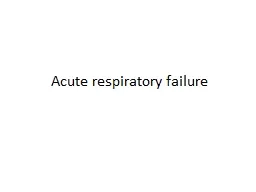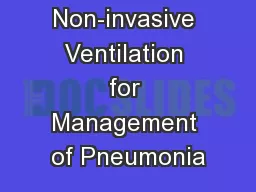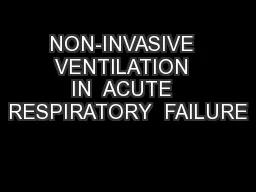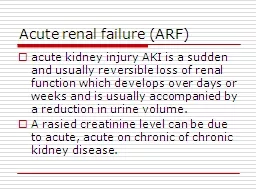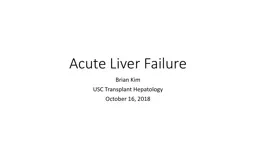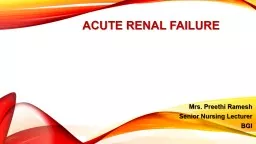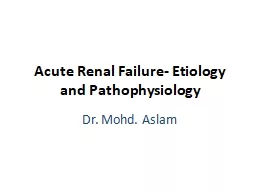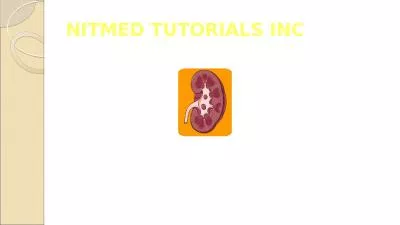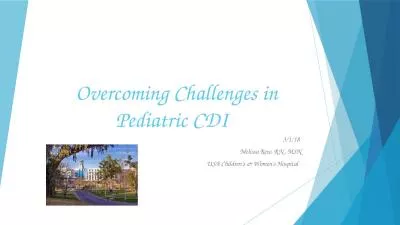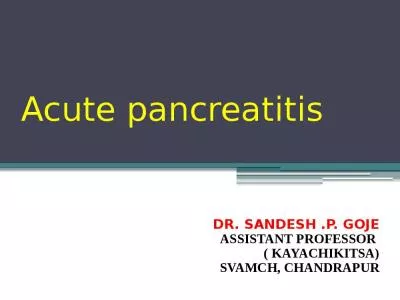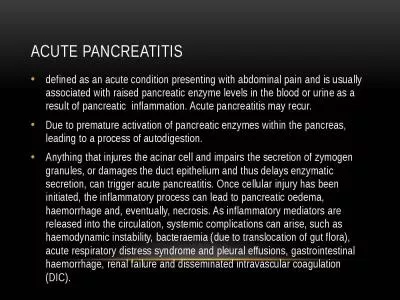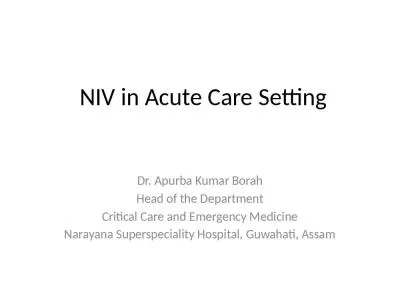PPT-Acute respiratory failure
Author : conchita-marotz | Published Date : 2018-12-24
Classification of RF Type 1 Hypoxemic RF PaO2 lt 60 mmHg with normal or PaCO2 Associated with acute diseases of the lung Pulmonary edema Cardiogenic noncardiogenic
Presentation Embed Code
Download Presentation
Download Presentation The PPT/PDF document "Acute respiratory failure" is the property of its rightful owner. Permission is granted to download and print the materials on this website for personal, non-commercial use only, and to display it on your personal computer provided you do not modify the materials and that you retain all copyright notices contained in the materials. By downloading content from our website, you accept the terms of this agreement.
Acute respiratory failure: Transcript
Download Rules Of Document
"Acute respiratory failure"The content belongs to its owner. You may download and print it for personal use, without modification, and keep all copyright notices. By downloading, you agree to these terms.
Related Documents

